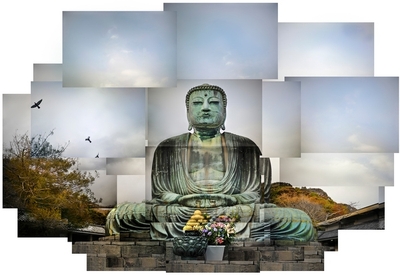Photo Profile - David Butow: "I wanted to look at something more positive"

|
|
|
San Francisco-based photographer David Butow understood this implicitly when, in December of 2013, he bought himself a plane ticket for South Africa. His nominal goal was to photograph news events surrounding the funeral of Nelson Mandela. But when Butow talks about the trip, he uses a different verb to describe his reason for going there. “I knew there was going to be some uplifting spirit in South Africa at that time,” he says, “and I wanted to experience it.”
For the previous 13 years, Butow had been covering wars, natural disasters and other news stories around the globe, working as a contract photographer for US News & World Report through 2008 and later as a freelancer. “After Afghanistan and Iraq and a couple of tsunamis, I wanted to look at something more positive in the world,” he says.
The death of the man who led South Africa out of apartheid gave him that chance. “Few contemporary figures have had such a positive impact on the world,” he says. “And his funeral wasn’t at all a time of sadness. People in South Africa saw it as an opportunity to celebrate his life. I thought of Cartier-Bresson’s pictures of Mahatma Gandhi’s funeral in 1948. While this wasn’t of the same scale, it had the same feeling.”
Butow traveled throughout the country covering the celebration, from Johannesburg to Pretoria, the nation’s capital, and finally to Qunu, the small village where Mandela had grown up and was buried. His expenses were partially offset by his agency, Redux, which at the last minute found Butow an assignment with a Finnish newspaper looking for coverage of the event.
“David had the initiative to witness this historic moment, and I know what kind of work he can do, so we helped back the trip,” says Redux head Marcel Saba. “It’s just so crucial for photographers to keep motivated.”
After shooting for the newspaper for four days, however, Butow decided to head off on his own to document the South African scene the way he wanted to. And this he did in a counterintuitive way, shooting in black and white.
“South Africa is a very colorful place—the sky and the light are amazing—but I felt that what was most important was the emotion of the people. I thought all the color would be distracting. It would have been too easy to make pictures that had nothing to do with Mandela,” he says.
Creating Long-Form Photo Work
The pictures he ended up shooting, which have been widely praised and are featured on the cover of the American Photography 30 annual, marked a personal turning point for Butow, who grew up in Dallas, studied political science at the University of Texas at Austin, and broke into photojournalism via internships at the Dallas Morning News and Los Angeles Times. After shooting for Time, People, and other magazines, he went to work for US News & World Report, traveling around the globe on assignments.
“I always thought of photography as a way for me go to places that I would never get to go to otherwise, and the magazine gave me the chance to do that,” he says. In recent years, as the publishing industry stumbled under the weight of the Internet and magazine budgets were sliced, Butow found himself thinking about other kinds of work and new kinds of inspiration.
“On the advice of a fine-art photographer I know, I decided to start a series of personal projects,” he says. Butow prefers to call the projects “long-form photo work,” but in any case the idea was to hit the refresh button. “At any given time, I’m trying to have one project that I’m just finishing and one that I’m just starting,” he adds.
At the moment, he is finishing an ambitious photographic portrait of Buddhism—work that has taken him from Bhutan and China to Cambodia, Sri Lanka, Japan, and back to San Francisco. To capture the spiritual nature that lay behind familiar Buddhist symbols and rituals, Butow used a variety of photographic techniques, including double exposures and camera panning. Portions of the work have been published in the New York Times and in Tricycle, a Buddhist magazine, and this month Butow will also be discussing the series at the Ho Center for Buddhist Studies at Stanford University. “I’m interested in exploring this academic side of my work, which is something I haven’t really done before,” he says.
On the horizon is a project whose subject couldn’t be more different: Las Vegas. “I’m looking at the uniqueness of Vegas and the fakeness of it,” Butow says. The decision to change his gaze from the serenity of Buddhism to the neon of The Strip was no accident—it was the challenge of trying something new, he says, that drew him to the idea.
Butow is also reaching for new ways to publish his work: In December he launched a Kickstarter campaign to fund a 64-page zine featuring photographs he shot in Ferguson, MO, following the shooting death of Michael Brown. He describes the work as an “emotional portrait” of the community’s reaction to the incident. “The idea is to put out something that is immediate and lasting at the same time, in the vein of the older Life magazine,” he says.


